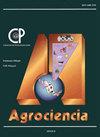OPTIMIZATION OF THE BIOMASS PRODUCTION FROM SPROUTS OF NEO-TROPICAL VEGETABLE SPECIES
IF 0.5
4区 农林科学
Q4 AGRICULTURE, MULTIDISCIPLINARY
引用次数: 1
Abstract
Seed germination improves the nutritional quality of plant foods; since they increase the contentsand availability of essential nutrients and reduce the levels of antinutrients. A considerablenumber of species have been studied, but to date, there are few studies on vegetable species ofthe neo-tropics. The aim of this study was the evaluation and optimization of mineral nutrientsolutions [Adelusi-Oseni (AO), Ruakura (Ru), Maeda (M)] and their combinations with compostextracts (EC1, EC2, and EC3) obtained from three different solvents, on the development ofbiomass of four neo-tropical vegetable plants in Mexico: pumpkin (Cucurbita pepo L.), papalo[Porophyllum ruderale (Jacq.) Cass.], pipitza (Porophyllum linaria Cav.), and purslane (Portulacaoleracea L.). The hypothesis was that biomass production achieved with the nutrient solutionswould lead to the highest yield for each seed compared to the control. Germination was carriedout in Petri dishes with cotton pads as substrate, adding 5 mL of nutrient solution, along witha control grown with water, in a photoperiod of 12 h; continuing germination until completing96 h. San Cristóbal experimental design was applied to the nutrient mixtures with the greatestpositive impact on the production of biomass. An ANOVA was carried out with Tukey andDunnet means comparison tests. For pumpkin sprouts, solution EC3E2 managed to increaseseedling growth by 395.2 % in comparison to the control; EC2A displayed a greater elongationin comparison with the control of 84.7 % for papal sprouts; EC2A produced an increase of 15.8 %in pipitza. In purslane, EC2A produced an increase of 53.7 %. Nutrition with compost extractscan favour the production of biomass from sprouts.新热带蔬菜种芽生生物量的优化研究
种子萌发提高了植物性食品的营养品质;因为它们增加了必需营养素的含量和可用性,减少了抗营养素的水平。对相当数量的物种进行了研究,但迄今为止,对新热带蔬菜物种的研究很少。本研究的目的是评价和优化矿质营养液[adelusii - oseni (AO), Ruakura (Ru), Maeda (M)]及其与三种不同溶剂获得的复合提取物(EC1, EC2和EC3)的组合对墨西哥四种新热带蔬菜植物:南瓜(Cucurbita pepo L.),木瓜[Porophyllum ruderale (Jacq.)]生物量的发展。卡斯。]、匹果(Porophyllum linaria Cav.)和马齿苋(Portulacaoleracea L.)。假设是,与对照相比,营养液实现的生物量生产将导致每个种子的最高产量。在培养皿中,以棉垫为底物,加入5 mL营养液,以及与水一起生长的对照,在12 h的光周期中发芽;继续发芽至完成96 h。San Cristóbal试验设计适用于对生物量产生最大正影响的营养混合物。采用Tukey和dunnet均值比较检验进行方差分析。与对照相比,EC3E2溶液能使南瓜苗的生长率提高395.2%;与对照相比,EC2A对教皇芽的伸长率为84.7%;EC2A使匹萨的产量增加了15.8%。在马齿苋中,EC2A的产量增加了53.7%。营养与堆肥提取物可以有利于生产生物质从芽。
本文章由计算机程序翻译,如有差异,请以英文原文为准。
求助全文
约1分钟内获得全文
求助全文
来源期刊

Agrociencia
农林科学-农业综合
CiteScore
0.50
自引率
33.30%
发文量
51
审稿时长
18-36 weeks
期刊介绍:
AGROCIENCIA is a scientific journal created and sponsored by the Colegio de Postgraduados. Its main objective is the publication and diffusion of agricultural, animal and forestry sciences research results from mexican and foreign scientists. All contributions are peer reviewed. Starting in the year 2000, AGROCIENCIA became a bimonthly and fully bilingual journal (Spanish and English versions in the same issue). Since 2007 appears every month and a half (eight issues per year). In addition to the printed issues, the full content is available in electronic format.
 求助内容:
求助内容: 应助结果提醒方式:
应助结果提醒方式:


